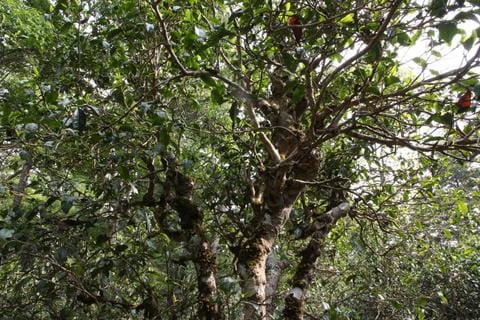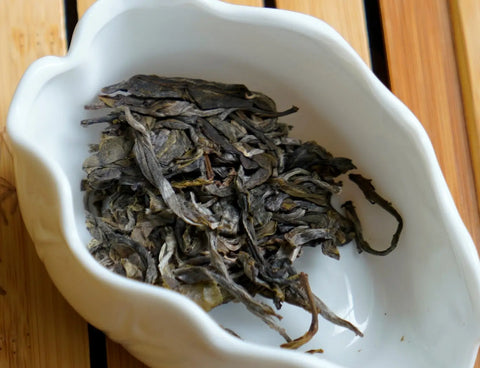
Understanding Pu-erh Tea and Appreciating the Importance of Terroir
Many pu-erh tea drinkers have become familiar with Menghai county and the tea factories in that region. The name itself is practically synonymous with “high-quality,” a reputation earned from the region’s success throughout the 1970s and 80s. With no sign of slowing down, to this day, Menghai teas tend to be more expensive on average than similar teas from the surrounding regions.

When it comes to Menghai, tea connoisseurs will pay a premium. While the name of this region alone will drive pu’erh lovers crazy, make no mistake that there really is something unique about a Menghai pu’erh (as our recent gold medal tea can attest to). Specifically, there are certain, beloved qualities that these tea drinkers are seeking, qualities that define what a Menghai tea is supposed to be.
The teas from this area are famous for their aggressive, bold, and strong attributes. For example, after sipping, one might notice that the mouth-watering sweetness of the hui gan is unusually assertive and quick—unless, of course, one happens to be distracted by the especially titillating, cooling sensation of the woodsy, camphor-like zhang (樟). Forgetting their reputation, it is for the excitement of these qualities alone that one should reserve a space for a good Menghai pu’erh in your tea cabinet.
But no matter how thrilling a Menghai pu’erh can be, it is important to recognize that it represents just one face of the many-sided world of intriguing pu’erh. Where Menghai epitomizes strength, for instance, we might say that a good Yiwu pu’erh epitomizes secrecy. It is like the yin (陰) to the Menghai’s yang (陽).
Indeed, a Yiwu Pu-erh is in many ways the polar opposite of Menghai, even down to their production. As opposed to the larger-scale operations of Menghai tea factories, many Yiwu teas are produced in smaller batches by hand. In terms of taste, Yiwu Pu-erh teas usually lack the boldness of Menghai, but they more than make up for it with a profound hou yun or “throat charm”, a vaporous sensation that flows from the throat up through the nose as if one were breathing the essence of the tea.

Part of appreciating the difference between teas comes down to understanding what they are striving to be. A Yiwu tea is simply not trying to be a Menghai tea. Its flavors are more subtle, meant to be experienced over time through multiple infusions. As if it is engaging in a courtship ritual with its you, it conceals its best flavors through the first two steeps, demanding patience before you have the chance to experience what it has to offer.
Does this mean that a Yiwu Pu-erh is somehow “better” than a Menghai?
Not at all. It doesn’t imply anything about superiority or inferiority. They’re just… different. And we should respect this difference, learn it, develop an awareness of it and an appreciation for it.
No matter which one chooses to sample, it is important to remember that both are just two kinds of Pu-erh, two sides of a wonderfully complex, enriching world of pu’erh tea. There are certainly more with which we can (and should) become acquainted, each with their own characters as well (like Mengku, and Fengqing).
Without acknowledging these differences, it is easy to miss all that this world has to offer.
In sum, like wine, we should strive to understand Pu-erh in terms of regions and terroir, and through that, develop a familiarity with what we really like and what each kind has to offer. Only then will we grow in our tea journey and better understand where we are in it.
